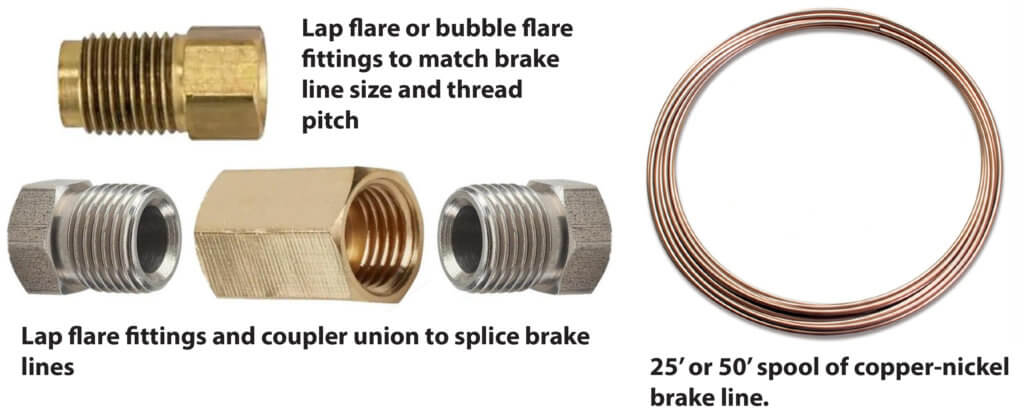How to replace a brake line yourself
Step by step guide on how to replace a brake line yourself
Having a shop replace a brake line can easily cost upwards of $1,000 or more because it’s such a labor-intensive job. But with about $300 in tools, you can replace multiple brake lines yourself.
Here are the tools you need to do a brake line replacement yourself
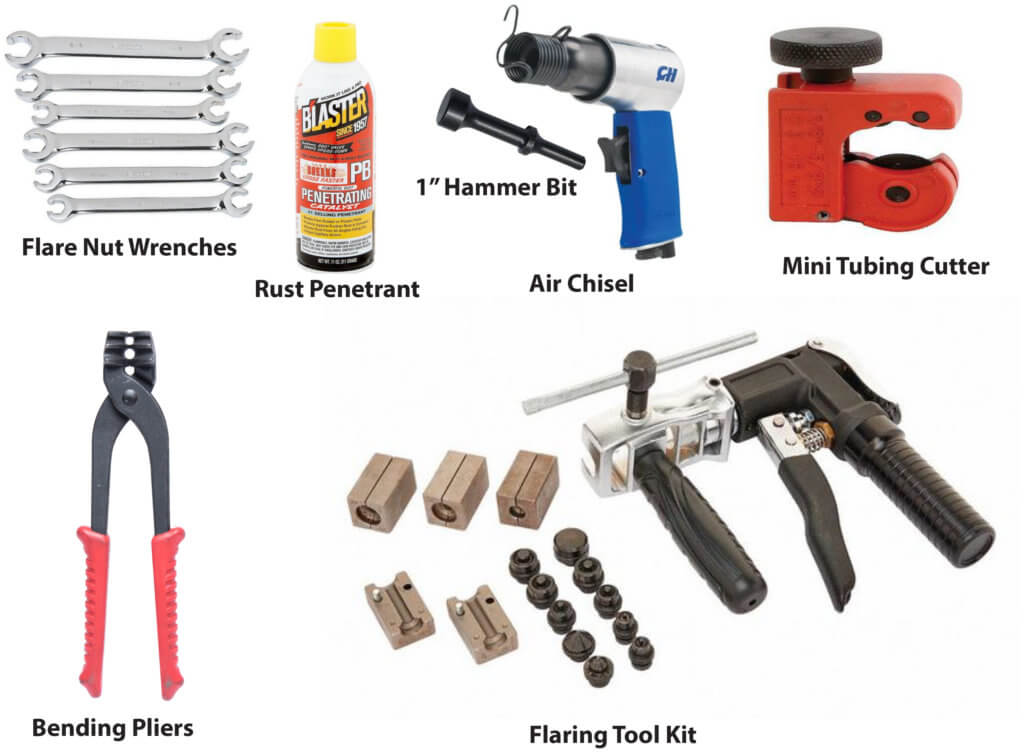 Start with a set of flare nut wrenches. You’ll need those to loosen and tighten the brake line fittings without rounding them off.
Start with a set of flare nut wrenches. You’ll need those to loosen and tighten the brake line fittings without rounding them off.
You’ll also need rust penetrant, an air hammer (optional) to vibrate rusty fittings, a mini tubing cutter, a bending pliers, and a professional grade flaring tool.
Here are the brake line supplies you’ll need
Tip #1: Buy the best flaring tool out there
The S.U.R. & R. hydraulic flaring tool is the best in the business. It’s idiot-proof and worth every penny. It can even make the difference between a flare that works or one that leaks and causes you to replace a section you just bent and replaced. The kit costs about $235 online. When you’re done with the job, just post the kit on eBay and sell it for about $190 to recoup the majority of your investment.
I’m also a bit fan of S.U.R. & R’s copper/nickel brake line. It’s easy to bend without kinking. I’ve used the copper/nickel brake line sold on amazon and I’m not impressed. It’s very easy to kink and not so easy to flare
Forget about cheap brake line tubing benders
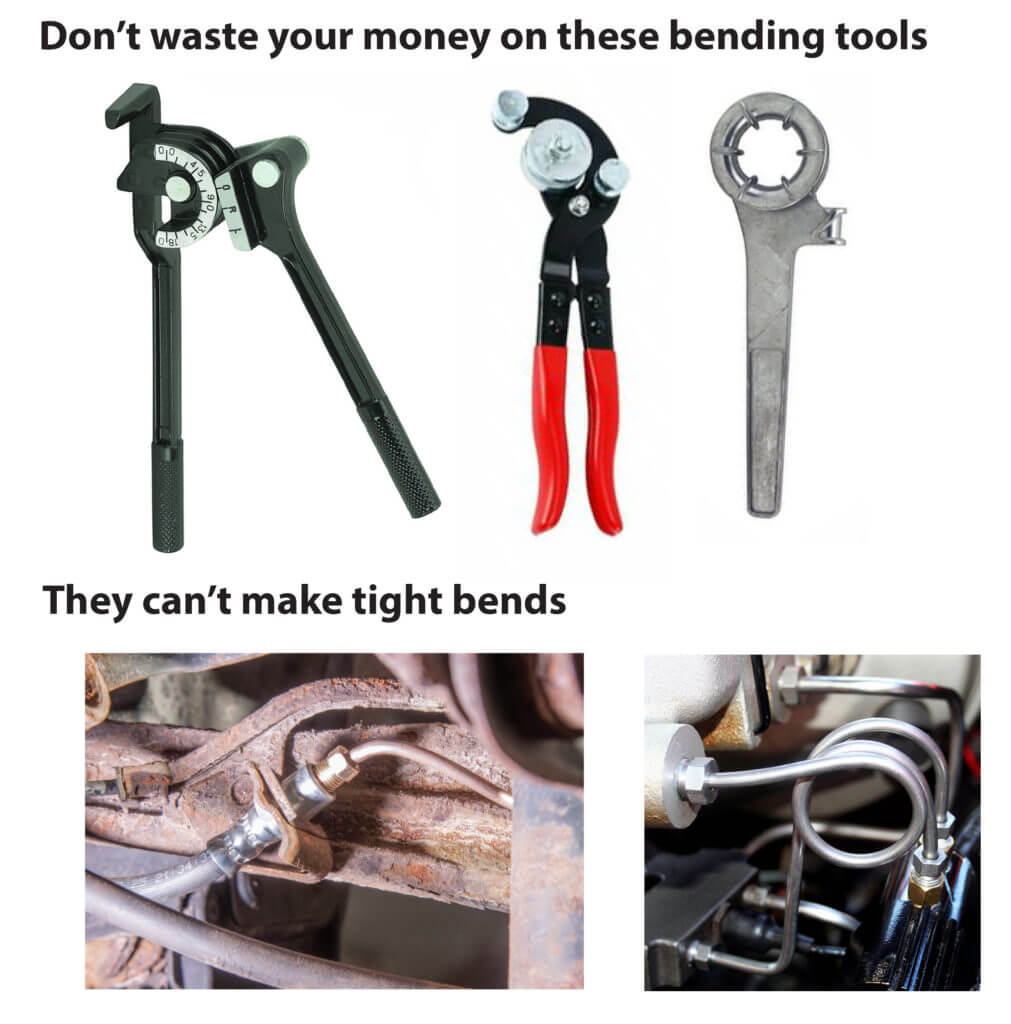
They’re garbage and they only bend a large radius bend. They’re worthless for making the tight bends you’ll need near brake hoses. Use bending pliers.
Here are the two brands I recommend.
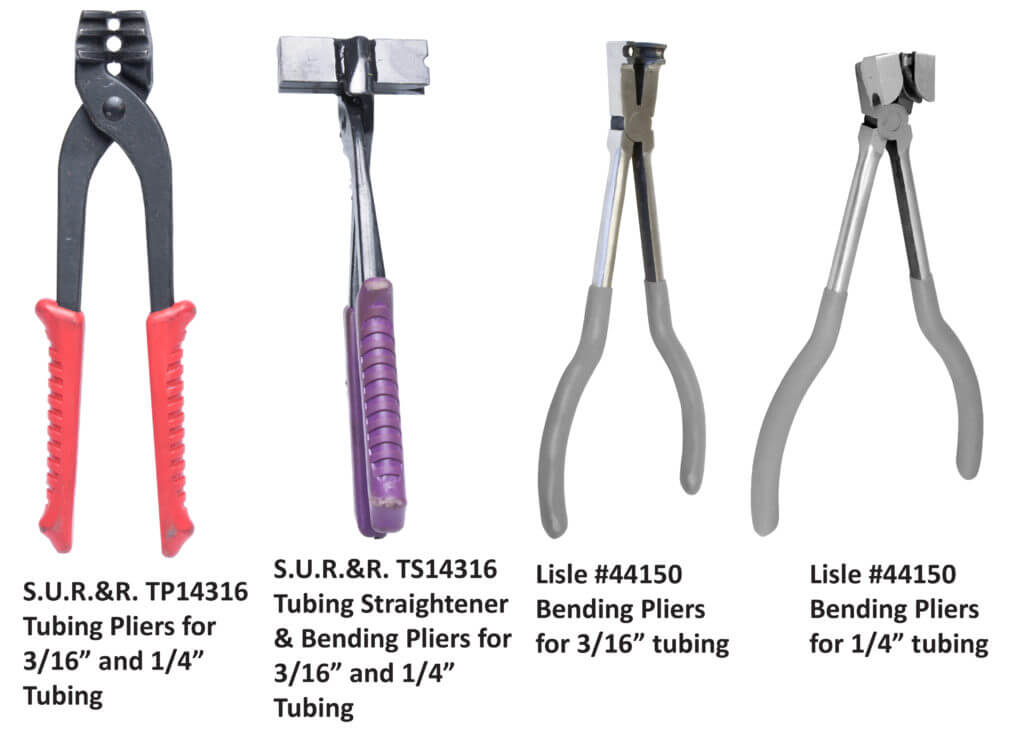
Step 1 to replace rusted brake lines: Disconnect the brake line at the ABS modulator or the master cylinder
If you start the job by disconnecting the line at the leak site or the caliper/wheel cylinder, the line will continue to drip and drain the master cylinder. That’ll require a bench bleed when you’re done, which is a complete waste of time. If you disconnect the line under the hood and plug it, you won’t have to perform a master cylinder bench bleed.
Step 2: Disconnect the brake line where it attaches to the brake hose
I’ll show you how to replace a rusted brake line that connects to the rubber brake hose. Those fittings are usually completely rusted to the brass fitting on the brake hose. If your leak is in a horizontal line, skip to the next step.
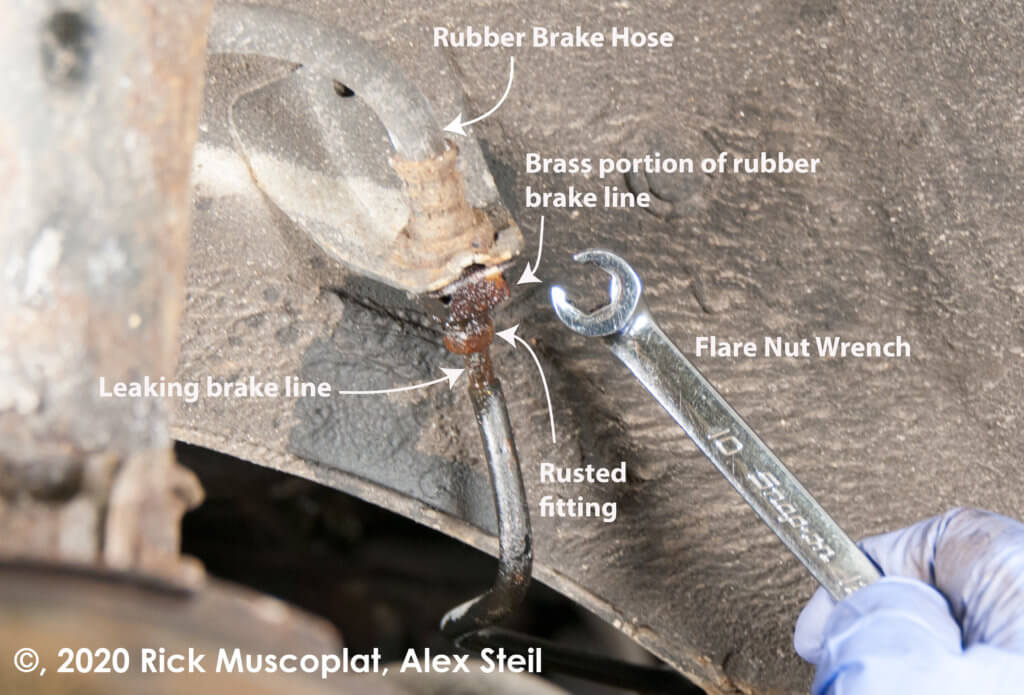
Soak the brake line fitting with rust penetrant. Use a flare nut wrench to see if it will unscrew. If it doesn’t, STOP. These fittings are usually rusted to the brass brake hose connection AND to the steel brake line that runs through the fitting.
If the brake line fitting won’t budge
Rust is like glue, so it seals the threads and prevents the rust penetrant from wicking into the threads to dissolve rust, lubricate and allow the fitting to move. Vibration breaks up the rust and allows the rust penetrant to seep into the threads.
WARNING: The fitting will be rusted. If you don’t follow my instructions, you’ll strip the fitting and possibly damage the brake hose. This requires a bit of patience and finesse to remove
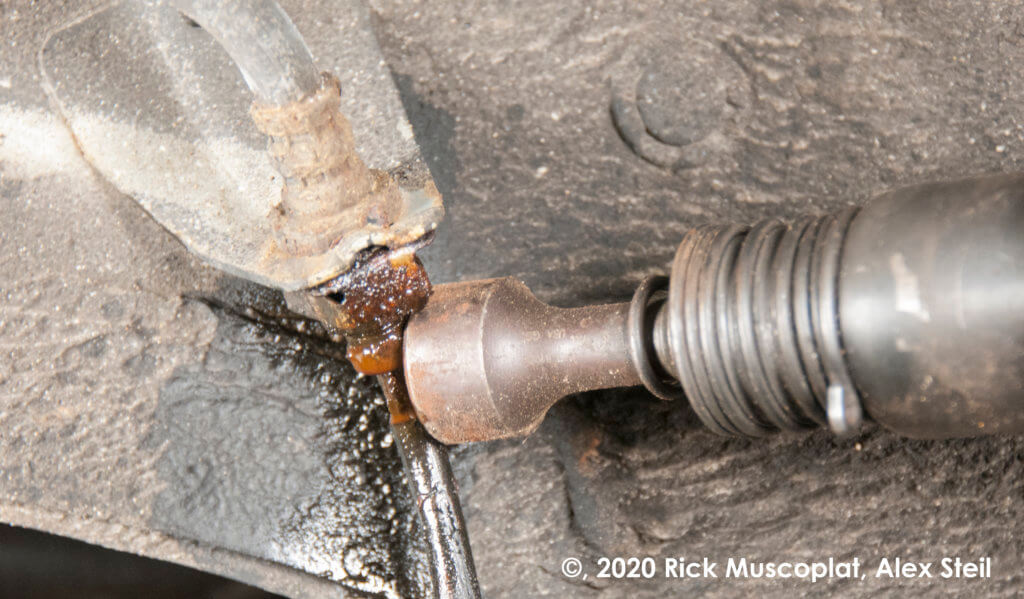
I use an air chisel equipped with a hammer bit. Pull the trigger and just let it vibrate the heck out of the fitting. Spray on more rust penetrant and repeat the vibration. Then try again with the flare nut wrench. This works 90% of the time.
However, if your fitting still won’t unscrew from the rubber brake line, you’ll have to but the steel line and splice in a new section, along with a new rubber brake hose.
Use the mini-tubing cutter or long-handled side cutters and cut the tubing. Then try using a deep socket to remove the fitting. If that twists the brass fitting on the brake hose, you’ll have to replace the complete brake hose.
Step 3: Cut out the rusted brake line section
Follow the rusted brake line back until you reach a good section. Use the mini tubing cutter to cut the line. This is where you’ll splice in a new line.
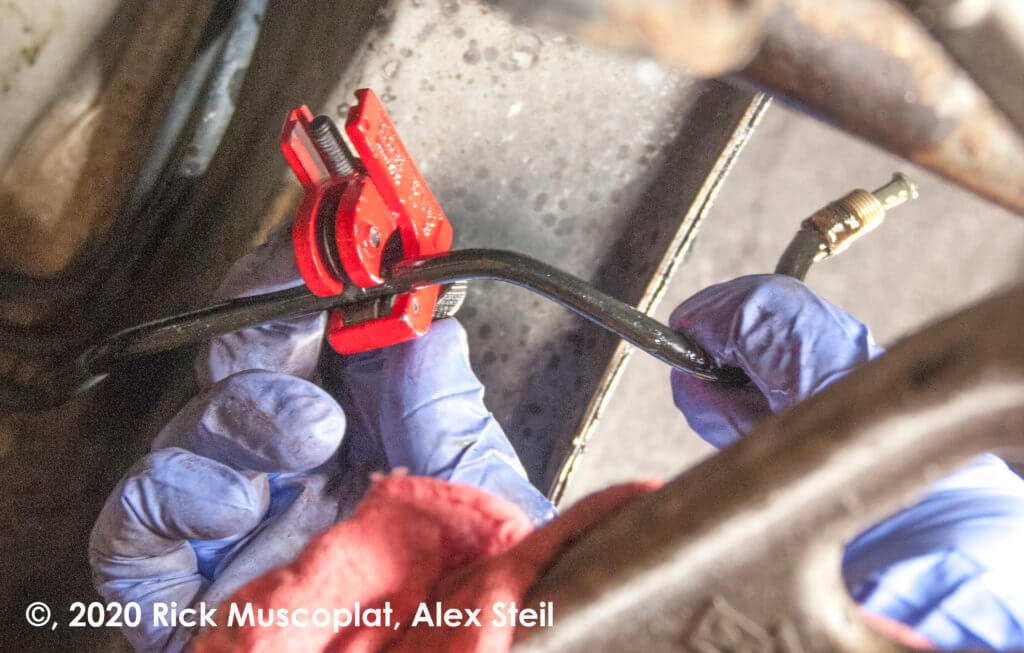
Step 4: Clean and flare the freshly cut line
Clean off any dirt and debris from the freshly cut line. Slide on a new flare nut to fit the coupler union. Load the line into the S.U.R. & R. flaring tool and perform a two-step double lap flare.
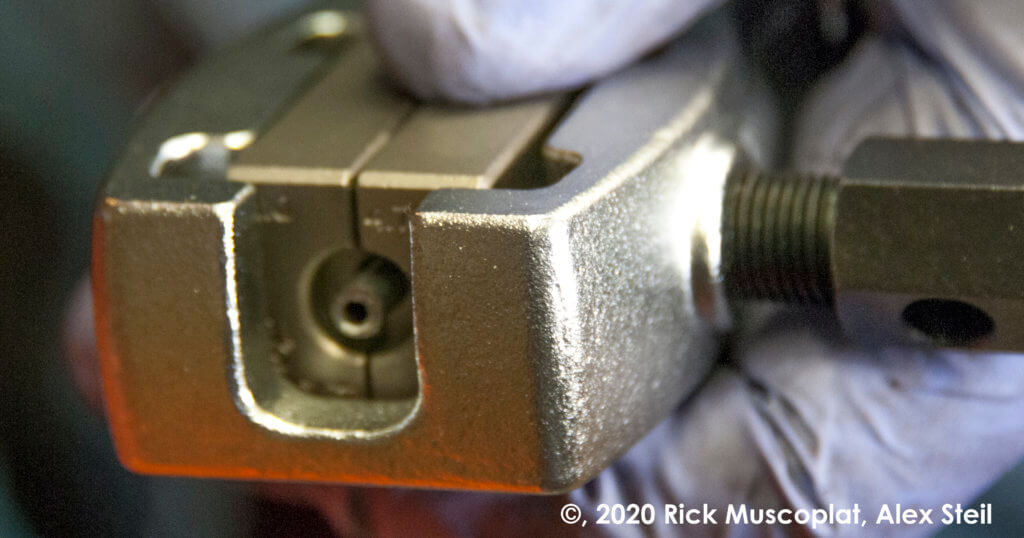
Load the freshly cut line into the S.U.R.&R. die and holder. Slide the line until it’s flush with the end of the die. Then clamp it in place.
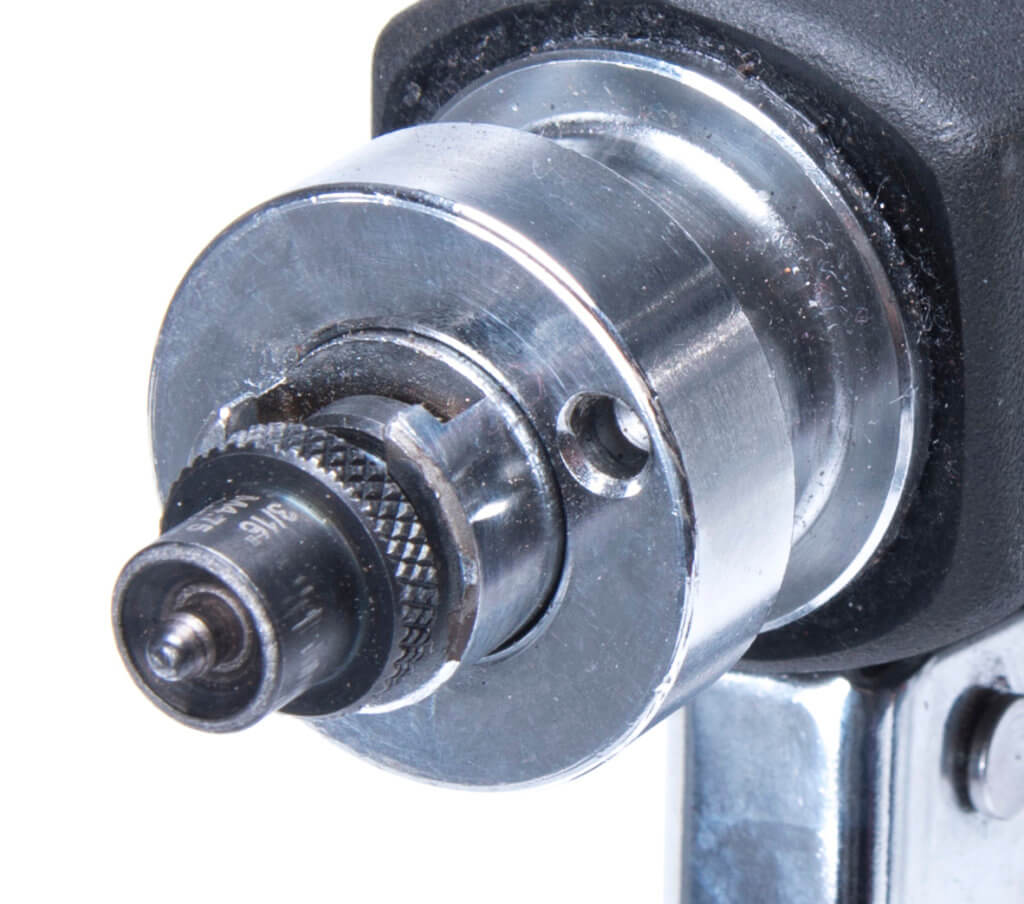
Load the rounding over punch into the tool
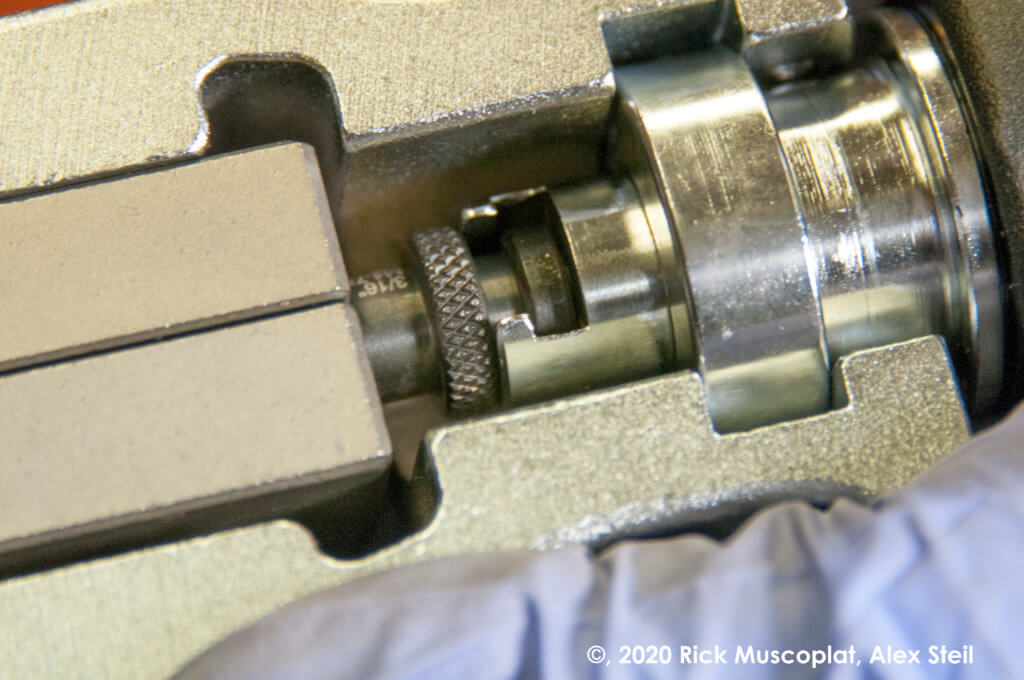
Insert the flare tool into the die and squeeze the trigger. This will round over the brake line and complete the first step in a double lap flare.
Insert the flare punch into the tool and squeeze the trigger. That will complete the flare.
Step 5: Bend the replacement line
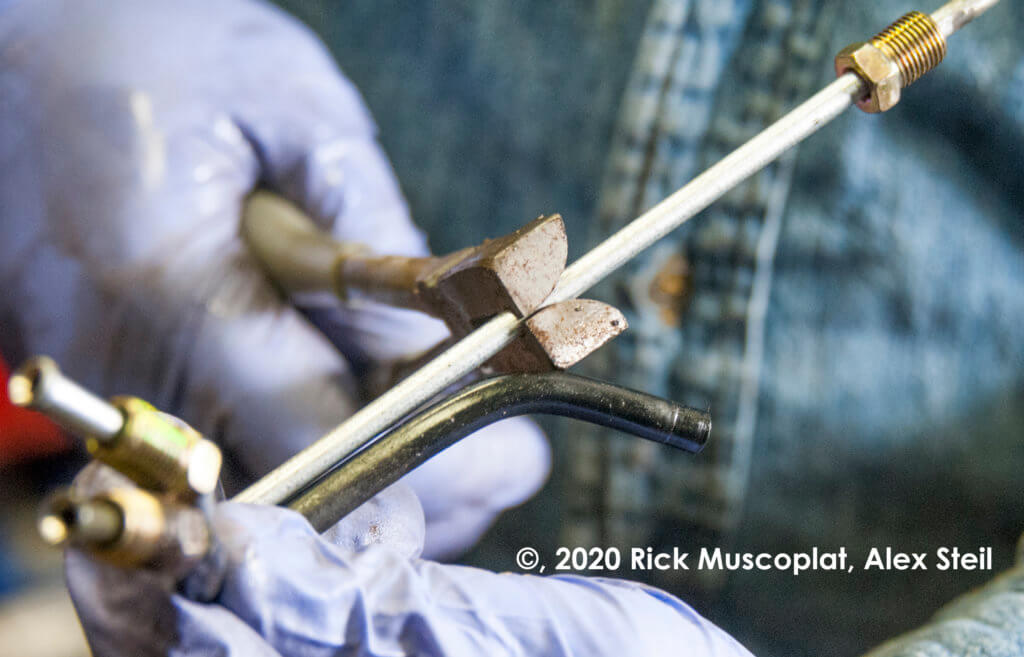
Slide a new fitting onto the brake line before you start bending. Then use a bending pliers to form the first bend.
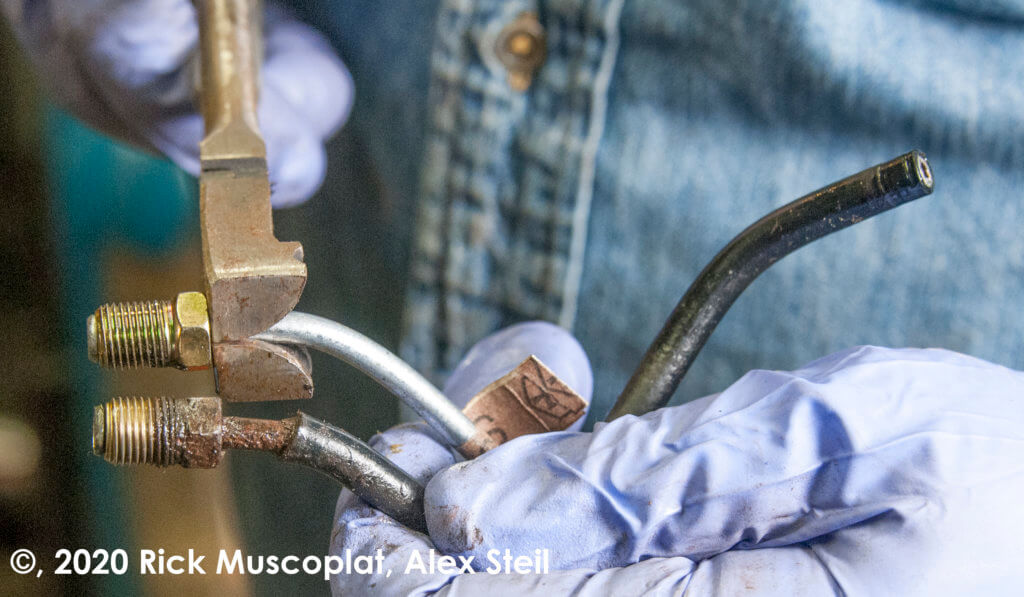
Use the old brake line as a template. Use your bending pliers to duplicate the bends.
Step 6: Connect the new brake line section to the coupler union
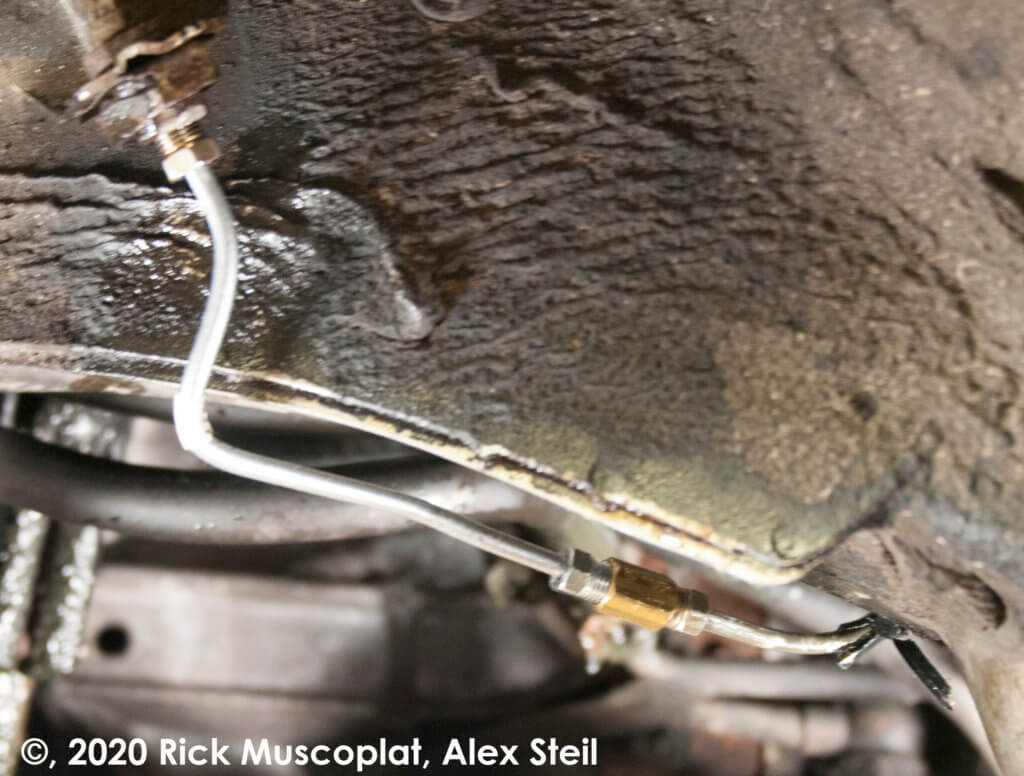
Joint the old and new brake line sections with a coupler union. Hold the union with an open end wrench and tighten each fitting with a flare nut wrench
Step 7: Reconnect the brake line at the ABS modulator or master cylinder
Refill the master cylinder. Then bleed the brake line with a handheld vacuum pump.
©, 2020 Rick Muscoplat, Alex Steil

